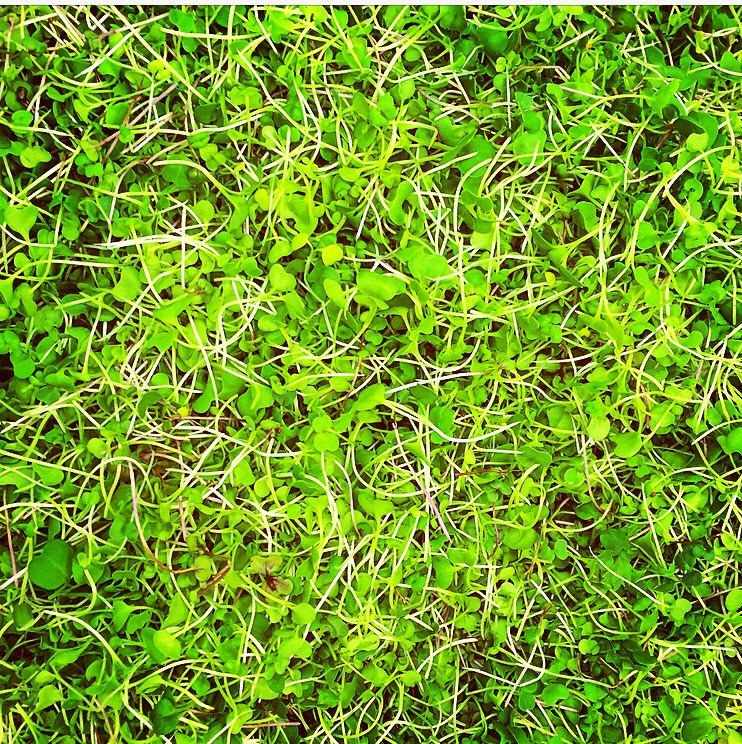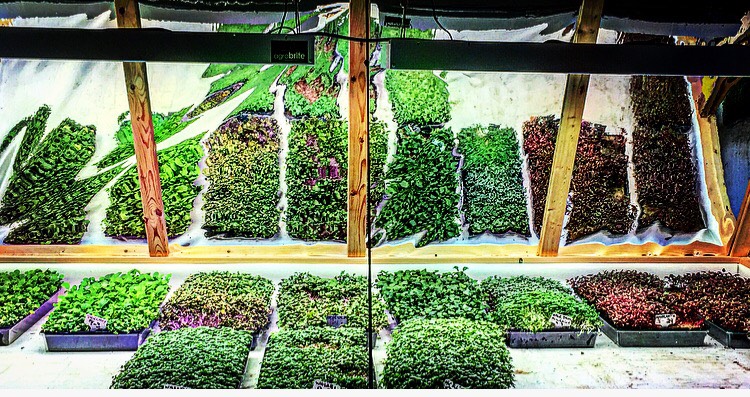Beautifully Nutritious
 Sprout, micro, baby, mature; four vital stages in producing beautiful vegetables, fruits, and herbs. In recent years, scientists have found that micro greens are quite the super food, providing antioxidants and nutrients. In 2012, after studies from the United States Department of Agriculture were conducted, news was released stating that micro greens have increasingly higher nutritional value than that of the full grown plant. Apparently one of the best vitamins to gain in eating micros is vitamin C. For every 100 grams of micro greens, there are 20 milligrams of vitamin C. And, not to mention it’s more than twice the amount of vitamin C that would be found in tomatoes, our beloved summer fruit. Cabbage is surprisingly weighing in at 147 milligrams of vitamin C for every 100 grams of micro cabbage. And to compare that number of micros to 100 grams of full grown cabbage, there is 90 milligrams more vitamin C in the micros. Research also proved that the beta carotene (which reduces risk of eye disease) found in carrots is more nutrient dense in micro greens with 12 milligrams per 100 grams. Daikon radish micros are known for high levels of vitamin E; just a sprinkle over a salad will help you get the vitamins you need. Lastly, vitamin K produced during photosynthesis is abundant in amaranth greens, a vitamin that helps us maintain strong bones.
Sprout, micro, baby, mature; four vital stages in producing beautiful vegetables, fruits, and herbs. In recent years, scientists have found that micro greens are quite the super food, providing antioxidants and nutrients. In 2012, after studies from the United States Department of Agriculture were conducted, news was released stating that micro greens have increasingly higher nutritional value than that of the full grown plant. Apparently one of the best vitamins to gain in eating micros is vitamin C. For every 100 grams of micro greens, there are 20 milligrams of vitamin C. And, not to mention it’s more than twice the amount of vitamin C that would be found in tomatoes, our beloved summer fruit. Cabbage is surprisingly weighing in at 147 milligrams of vitamin C for every 100 grams of micro cabbage. And to compare that number of micros to 100 grams of full grown cabbage, there is 90 milligrams more vitamin C in the micros. Research also proved that the beta carotene (which reduces risk of eye disease) found in carrots is more nutrient dense in micro greens with 12 milligrams per 100 grams. Daikon radish micros are known for high levels of vitamin E; just a sprinkle over a salad will help you get the vitamins you need. Lastly, vitamin K produced during photosynthesis is abundant in amaranth greens, a vitamin that helps us maintain strong bones.
Who would think to place a micro green garden in the middleof the city of Poughkeepsie. The initial opening of his 100-acre space comprised of offices and gardens, was back in the Spring of 2015 when entrepreneur Brud Hodgkin’s decided to test the growth of hydroponic tomatoes and strawberries. The end result produced a bland product that was not sufficient for his gardening goals. So he decided to look into micro greens and found they value far more nutrients than expected. The idea of operating this nifty business on Maine Street Poughkeepsie is to increase commerce of the surrounding area, offer veterans and troubled youth with the opportunity to get a job, and to produce a product that has many nutritional benefits. Hodgkin’s invites camps and school groups to tour the facility and learn about the process of photosynthesis. The plants grow under LED lights, in a compost produced by a company named McEnroe. The compost is a collection of food scraps that sits and cooks for three years before being put out on the market. The varietal of micros is grown in mesh containers covered in wet paper towel. The uncovered seeds are placed in a separate room to germinate at a temperature of 80 degrees and then he transports them under the LED lights to finish growth. The water used for the plants is sterilized by boiling and cooling, and noted not to affect thenutritional value. The cost to grow one flat of micro greens is about $10 and he sells them for $21 for an 8 oz. flat. Currently Hodgkin’s and his team produce 80-100 pounds of product weekly, with a goal to grow about 1000 pounds per week.
The Indoor Organic Gardens of Poughkeepsie sell over 14 varieties of micro greens to 70 local restaurants, food markets, and elementary schools. Hodgkin’s is running a test at a local elementary school to see how kids react to eating these healthful micro leaves. Krieger Elementary school is experimenting on fifth graders, having them consume 1/3 oz. micro cabbage every week in a smoothie. The same value of nutrition is found in 2.5 pounds of matured cabbage. The end result of this observation is to prove that kids and elderly people can become more nutritiously stable off many varieties of micros. So before you shove micro cabbage to the side of your plate, let yourself reap the benefits of all the nutrition it provides instead.
